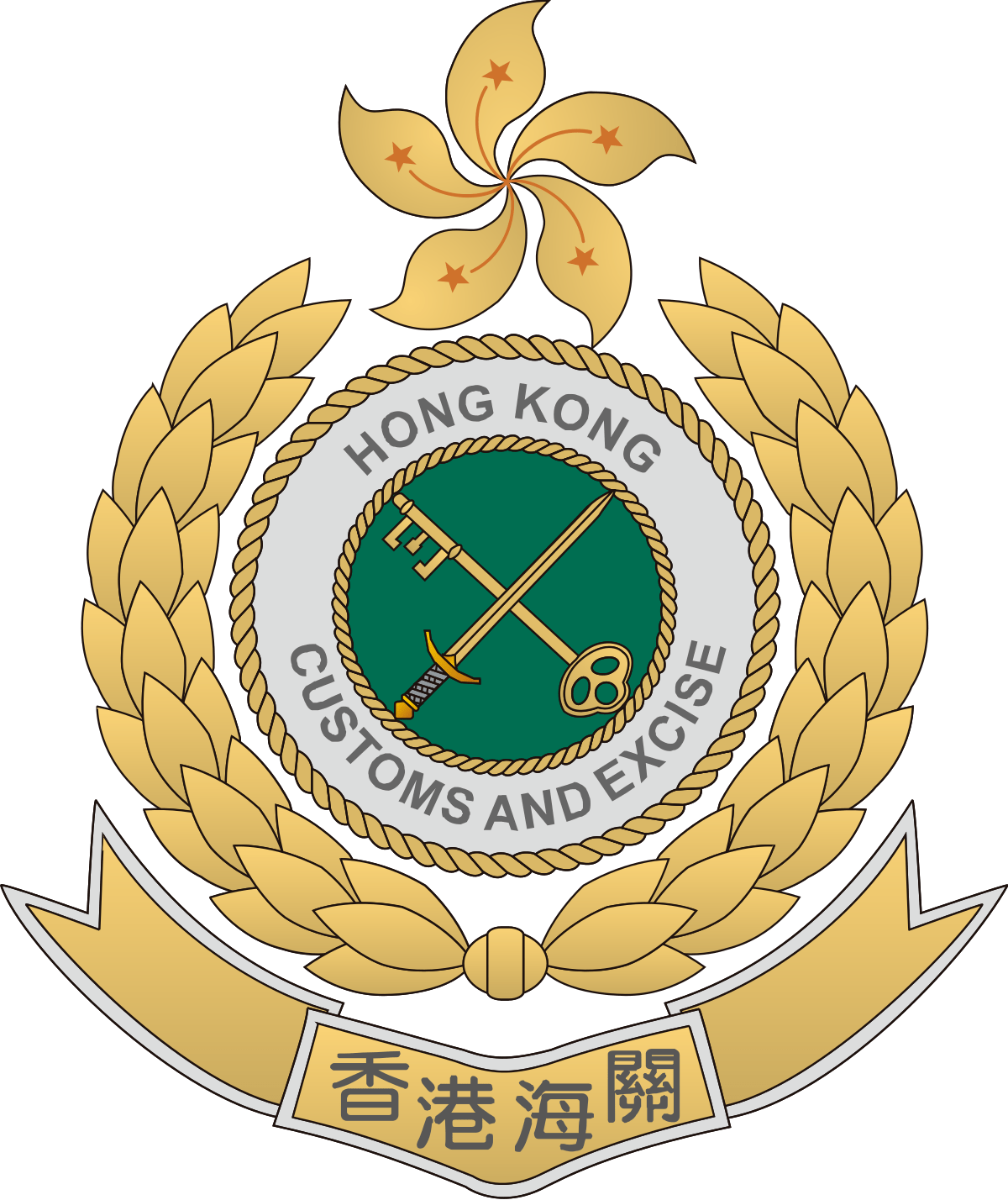Freight shipping between China and Hong Kong | Rates – Transit Time – Duties and Taxes – Advice
Do you want to import products from China to Hong Kong? We have written this destination guide, which gathers all the information necessary for the excellent progress of your transport.
We will tell you which means of transport between Hong Kong and China will be the most appropriate for your situation, and what the transit times and tariffs will be. Likewise, we will also give you indications on customs clearance and professional advice.
What is the best method of transportation between China and Hong Kong?
To begin with, we will compare the different existing modes of transport between China and Hong Kong: sea freight, road freight, air freight, and rail freight.
We will give you the advantages and disadvantages of each of these modes of transportation. And we will guide you on your choice with advice according to different situations.
Docshipper Note:
Need assistance with your shipment? Dont hesitate to contact us even for a simple question. Choose the option that suits you
Live chat with an expert Chat us on WhatsApp Fill the form
DocShipper Tip:
Sea freight will be the best option if:
- You have a small budget.
- You ship at least 2CM of goods.

Sea freight from China to Hong Kong
Transport by ship from China to Hong Kong
The history of trade between Hong Kong and China goes back several centuries. Before the handover of Hong Kong to China in 1997, the city was under British administration and already played an important role in maritime trade with China. The port of Hong Kong has become one of the most dynamic and well-equipped ports in the world, offering modern facilities for the handling of sea cargo.
With the economic growth of China in recent decades, the bilateral trade between Hong Kong and China has grown considerably. Sea freight has become a preferred choice for transporting a wide variety of goods, from manufactured goods and raw materials to electronic products and consumer goods. Hong Kong and China Mainland ports have adapted to this growing demand by upgrading their infrastructure and implementing efficient procedures to facilitate shipping operations.
In this section dedicated to sea freight between Hong Kong and China, we will discuss the main ports of China, the port of Hong Kong, transit times, different types of containers, and transportation costs.
Main ports of China
The port of Shanghai
![]() The Port of Shanghai, is the world’s largest container port, with a cargo capacity of over 40 million twenty-foot equivalent units (TEUs) per year. In 2020, it handled over 43.5 million TEUs of cargo.
The Port of Shanghai, is the world’s largest container port, with a cargo capacity of over 40 million twenty-foot equivalent units (TEUs) per year. In 2020, it handled over 43.5 million TEUs of cargo.
The port of Ningbo-Zhoushan
 Ningbo-Zhoushan Port, is the second-largest container port in China, with a cargo capacity of about 30 million TEUs per year. In 2020, it recorded a cargo volume of nearly 28.8 million TEUs.
Ningbo-Zhoushan Port, is the second-largest container port in China, with a cargo capacity of about 30 million TEUs per year. In 2020, it recorded a cargo volume of nearly 28.8 million TEUs.
The port of Shenzhen
 The Port of Shenzhen, is one of China’s busiest ports, with a cargo capacity of about 25 million TEUs per year. In 2020, it handled more than 25.2 million TEUs of cargo.
The Port of Shenzhen, is one of China’s busiest ports, with a cargo capacity of about 25 million TEUs per year. In 2020, it handled more than 25.2 million TEUs of cargo.
The port of Tianjin
![]() Tianjin Port, is one of the country’s largest ports, with a cargo capacity of about 17 million TEUs per year. In 2020, it handled more than 17.6 million TEUs of cargo.
Tianjin Port, is one of the country’s largest ports, with a cargo capacity of about 17 million TEUs per year. In 2020, it handled more than 17.6 million TEUs of cargo.
The port of Qingdao
 Qingdao Port, with a cargo capacity of about 18 million TEUs per year and a cargo volume of nearly 18.5 million TEUs in 2020.
Qingdao Port, with a cargo capacity of about 18 million TEUs per year and a cargo volume of nearly 18.5 million TEUs in 2020.
The port of Hong Kong
 The Port of Hong Kong is a major hub for sea freight, facilitating the efficient movement of goods between Hong Kong and China, as well as with other destinations around the world. With its modern facilities and cargo capacity of approximately 23 million twenty-foot equivalent units (TEUs) per year, Hong Kong Port offers quality logistics services, including quays, warehouses, and handling facilities, ensuring the smooth loading and unloading of goods.
The Port of Hong Kong is a major hub for sea freight, facilitating the efficient movement of goods between Hong Kong and China, as well as with other destinations around the world. With its modern facilities and cargo capacity of approximately 23 million twenty-foot equivalent units (TEUs) per year, Hong Kong Port offers quality logistics services, including quays, warehouses, and handling facilities, ensuring the smooth loading and unloading of goods.
As a strategic transit point, it plays a key role in maritime trade and logistics connectivity between Hong Kong and China, contributing to the economic growth of both regions.
Transit time from China ports to the port of Hong Kong
Above is a table showing the average transit times between the main ports in China and the port of Hong Kong.
| Shanghai | Ningbo-Zhoushan | Shenzhen | Tianjin | Qingdao | |
| Hong Kong | 4 days | 4 days | 1 day | 7 days | 5 days |
These transit times are given as an indication and may vary slightly.
Should I ship by groupage or full container between China and Hong Kong?
There are different types of containers, but the three most commonly used are:
- The 20-foot container has a capacity of 33 CBM.
- The 40-foot container has a capacity of 67 CBM.
- The 40-foot HQ container with a capacity of 76 CBM.
For each type of container, two different shipping methods can be used.
Maritime consolidation or LCL (Less than Container Load)
Maritime consolidation allows you to send goods when you do not have enough cargo to fill an entire container. The rest of the available space will then be used by other customers. This saves money when you send a quantity of goods less than 15 CBM.FCL (Full Container Load)
Full container load, as the name suggests, involves filling a container with the goods of one person. Note that it is not necessarily necessary to fill the entire container. From 15 CBM, your shipment will be profitable.
Advantages of Maritime Consolidation
- More cost-effective for shipments under 15m3.
- Possibility to ship small quantities of goods more often and therefore save on storage costs.
Disadvantages of Maritime Consolidation
- There is a higher potential for loss or damage to your goods as a result of frequent container openings.
- There is a chance of longer transit times due to the loading and unloading of goods from various customers.
Advantages of FCL
- It offers a greater cost advantage for shipments exceeding 15 CBM.
- It provides enhanced safety as the container remains sealed throughout the entire journey.
- It ensures faster transit times as there are typically no intermediate stops along the way.
Disadvantages of FCL
- A minimum volume of 15m3 to be profitable.
- Often requires advance planning, as containers must be reserved and scheduled for loading in advance.
DocShipper Advice
If you are in the business of coin and button batteries and sure of guidelines and restrictions in Europe. You don’t need to worry, our DocShipper experts are here to help you understand better of these guidelines. You just need to contact us here, with your question/requirements, our team will get in touch with you within 24hrs.
Special sea transport between China and Hong Kong
Reefer container
Refrigerated containers are designed for the transportation of perishable products such as foodstuffs or chemicals requiring a controlled temperature. They are equipped with cooling and humidity control systems;
Roro
Ro Ro are roll-on/roll-off vessels created to carry vehicles. The vehicles can be loaded through their own wheels, which facilitates loading.
Vrac (Bulk)
Bulk carriers are used to transport bulk goods such as minerals, liquids, etc.
OOG
OOG stands for Out Of Gauge, this term refers to goods whose dimensions exceed the size of standard containers.
Two containers have been created to answer this problem:
- Open Top Container.
- The Flat Rack Container.
How much does sea freight cost between China and Hong Kong?
The cost of sea freight between China and Hong Kong can vary depending on several factors, including the volume of goods, the type of cargo, the chosen shipping method, and the specific route. Additionally, freight rates are subject to market fluctuations and other external factors. Fill out our form with the necessary information and receive a free quote in less than 24 hours!
Tariff surcharges
Here are some common tariff surcharges that may be applicable in Hong Kong:
- Bunker Adjustment Factor (BAF): This surcharge accounts for the fluctuating cost of fuel (bunker fuel) used in shipping vessels. It helps shipping lines offset the impact of fuel price changes.
- Peak Season Surcharge (PSS): This surcharge is applied during peak shipping seasons when demand for container space is high. It helps shipping lines manage capacity and balance supply and demand.
- Currency Adjustment Factor (CAF): This surcharge addresses currency exchange rate fluctuations between the booking currency and the currency in which the shipping costs are invoiced.
- Emergency Risk Surcharge (ERS): This surcharge may be imposed during periods of unforeseen events or emergencies that can impact shipping operations, such as natural disasters or geopolitical disruptions.
- Low Sulfur Surcharge (LSS): This surcharge is introduced to comply with regulations requiring the use of low-sulfur fuel to reduce emissions. It covers the additional cost associated with using cleaner fuels.
- Congestion Surcharge: This surcharge is applied when there is congestion at a specific port or terminal, leading to delays and additional operational costs for shipping lines.
DocShipper info
If you would like to know the exact cost of your sea freight shipment between China and Hong Kong, the easiest way is to fill in our contact form. You’ll receive a free quote in less than 24 hours!
DocShipper Tip:
Air freight will be the best option if:
- You have a volume of less than 2 m³.
- You want your goods to arrive quickly.
Airfreight from China to Hong Kong
Classic or express air freight?
Air freight between Hong Kong and China is a crucial mode of transportation for time-sensitive and high-value goods. Hong Kong, with its strategic location and well-developed aviation infrastructure, serves as a major air cargo hub in the region.
Numerous airlines operate frequent flights connecting Hong Kong and various cities in China. These flights provide efficient and speedy transport options for both imports and exports.
There are two different forms of air freight:
Conventional air freight: This option uses the space available on commercial aircraft and is used by airlines such as British Airways, Cathay Pacific, and Emirates to ship goods on scheduled flights.
Express air freight: With this second option, more expensive, items are transported by specialized freight operators such as DHL, FedEx, and UPS.
Main airports in China
- Beijing Capital International Airport
- Guangzhou Baiyun International Airport
- Shanghai Pudong International Airport
- Shanghai Hongqiao International Airport
- Chengdu Shuangliu International Airport
- Shenzhen Baoan International Airport
- Kunming Changshui International Airport
- Xi’an Xianyang International Airport
Main airports in China

What are the advantages of air freight?
- Air freight is the most efficient method of transporting products across great distances. It is great for time-sensitive shipments, since goods may be moved from one nation to another in a matter of hours or days.
- When it comes to delivery timings, airlines have a high level of dependability since they operate on a regular schedule and have fewer delays due to weather or road conditions.
- For important or sensitive products, air freight provides a high level of protection. Airports employ stringent security procedures to guarantee that cargo is not tampered with or destroyed while in transit.
- Air freight has a genuinely global reach, with airlines operating in nearly every country on the planet. This allows things to be transported to even the most remote locations.
What are the disadvantages of air freight?
- In general, air freight is more expensive than other types of transportation, such as sea freight or land freight. The high expense is attributable to air travel’s speed, security, and convenience.
- Weight and dimension restrictions on air freight may limit the sorts of items that can be delivered. Some airlines may also limit the sorts of things that can be transported, such as hazardous chemicals.
- When compared to other modes of transportation, air freight has a greater carbon footprint, contributing to global warming and climate change.
How much does air freight cost between the UK and Hong Kong?
The cost of air freight between China and Hong Kong depends on a number of factors, including the weight and size of the consignment, the distance between the airports, the urgency of delivery, and current market pricing.
Air freight rates are often computed either on volumetric weight or gross weight, with the bigger of the two determining the shipping cost. The cost of shipping might range from a few hundred dollars to several thousand dollars.
How to calculate the volumetric weight of your shipment?
The load’s gross weight comprises the weight of the items as well as the weight of their packaging or pallet.
The volumetric weight of a package is the volume occupied by it, depending on its dimensions and gross weight. To determine the volumetric weight, first measure the package’s dimensions (length, breadth, and height) and then convert them to cubic meters. Then follow this formula:
Volumetric weight = (length x width x height) / 5000
(where 5000 is a standard conversion factor used in air freight)
DocShipper Recommendation
Rail freight is the best solution for you if :
- You have a volume of less than 2 m³.
- You want your goods to arrive quickly.
Rail freight from China to Hong Kong
Transport by train between China and Hong Kong
Rail freight between China and Hong Kong has gained popularity as an efficient and cost-effective mode of transport for goods. It offers a viable alternative to sea and air freight, especially for landlocked regions or for shipments that require faster transit times compared to sea freight.
The Guangzhou-Shenzhen-Hong Kong High-Speed Rail Link (GZSH) is a major railway line connecting Hong Kong with mainland China. This high-speed rail network has greatly facilitated the movement of passengers and cargo between Hong Kong and various cities in Guangdong Province, such as Guangzhou and Shenzhen. It has significantly enhanced connectivity and trade opportunities for businesses in the region.
The GZSH line is known for its speed and efficiency, with trains capable of reaching speeds of up to 300 km/h (186 mph). This allows for quicker transportation of goods, reducing transit times compared to traditional road transportation. The rail line has dedicated cargo trains equipped with specialized containers for efficient loading and unloading.
Rail freight between China and Hong Kong is particularly suitable for certain types of cargo, including electronics, automotive parts, textiles, and perishable goods. It offers a reliable and secure mode of transportation, with reduced risk of delays due to road congestion or weather conditions.

What are the train transit times from China to Hong Kong?
The train transit times from China to Hong Kong can vary depending on the specific origin and destination within China, as well as the type of train service used. Generally, high-speed trains offer faster transit times compared to regular trains. Here are some estimated transit times for popular routes:
- Guangzhou to Hong Kong: approximately 1 hour.
- Shenzhen to Hong Kong: approximately 20–30 minutes.
- Beijing to Hong Kong: around 9–10 hours, depending on the specific train and route.
- Shanghai to Hong Kong: around 8–9 hours, depending on the specific train and route.
It’s important to note that these transit times are approximate and can be subject to variations due to factors such as train schedules, stops, and any potential delays.
What are the advantages of rail freight?
- Rail freight can transport a greater amount of products at once, lowering the cost per unit of cargo.
- Rail freight emits lower greenhouse gas emissions per ton of cargo delivered, making it an excellent alternative for businesses seeking to decrease their carbon footprint.
- Rail freight is less impacted by highway congestion and weather, which reduces the possibility of delays.
Trains are less likely to be involved in accidents than cars, and rail freight is less vulnerable to theft and damage than other modes.
What are the disadvantages of rail freight?
- Rail freight is less flexible than other means of transportation, particularly for last-mile delivery. Rail transit needs infrastructure such as tracks and stations, which are not always accessible.
- Rail freight may have restricted handling skills, especially when it comes to fragile or perishable items. This may necessitate extra handling and packaging to protect the commodities during shipping.
DocShipper Advice
If you’re looking for a compromise between the price of air freight and the time required for sea freight, rail freight may be just what you’re looking for. Contact us to take advantage of our services!
Road freight from China to Hong Kong
DocShipper Tip:
Road freight is the best option for you if:
- The volume of your cargo is important.
- You send your goods to a place that is not accessible for sea or rail freight.
Transport by truck between China and Hong Kong
The road network between China and Hong Kong is well-developed and includes various highways and border crossings. The major border crossings for road freight include the Lok Ma Chau Control Point, Man Kam To Control Point, and Shenzhen Bay Port. These crossings serve as important gateways for the movement of goods and vehicles.
Road freight is particularly suitable for time-sensitive shipments or those requiring direct delivery to specific destinations. It allows for door-to-door service, enabling goods to be transported directly from the point of origin in China to the final destination in Hong Kong or vice versa.
How long does it take to ship by truck from China to Hong Kong?
The shipping time by truck from China to Hong Kong can vary depending on the specific origin and destination points, as well as factors such as distance, road conditions, and customs procedures. Generally, the transit time for truck shipments from China to Hong Kong ranges from a few hours to a couple of days.
For shorter distances within Guangdong Province, which borders Hong Kong, truck shipments can typically be delivered within one day. This includes routes from cities like Guangzhou, Shenzhen, Dongguan, and Foshan to Hong Kong.
For longer distances from other provinces in China, the shipping time can extend to two or more days.
What are the advantages of road freight?
- Road freight provides flexibility in terms of pickup and delivery locations. Trucks can reach both urban and rural areas, making it easier to transport goods directly to the desired destination.
- Road freight can be a cost-effective option, especially for short to medium-distance shipments. It eliminates the need for multiple handling and transfers associated with other modes of transport, reducing overall transportation costs.
- Trucks can accommodate various types of cargo, including general goods, perishable items, oversized goods, and hazardous materials. This versatility allows for a wide range of goods to be transported efficiently.
- Road networks are extensive and well-developed in many regions, providing access to even remote areas. This makes road freight a viable option for locations where other modes of transport may have limitations.
What are the disadvantages of road freight?
- Compared to other modes of transport like rail or sea, road freight has limited capacity for carrying large volumes of goods. Trucks have size and weight restrictions, which can be a limitation for certain types of cargo or bulky shipments.
- Road congestion and traffic delays can significantly impact the transit time of road freight shipments. Heavy traffic, accidents, or road construction can lead to unpredictable delays, especially in urban areas or during peak travel times.
- Road freight tends to be less cost-effective for long-distance shipments compared to modes like rail or sea. Fuel costs, tolls, and maintenance expenses can add up, making road freight more expensive for extended journeys.
- Road freight is associated with carbon emissions and contributes to air pollution. As sustainability and environmental concerns grow, there is increasing pressure to minimize the carbon footprint associated with transportation.

Door-to-door delivery between China and Hong Kong
The transportation of products from the place of origin to the ultimate destination, including the collection, transportation, and delivery of goods, is referred to as a door-to-door delivery service. Shippers benefit from this service since they no longer have to worry about the logistics of shipping their goods. E-commerce shipments, package deliveries, and other small to medium-sized items are frequently delivered door-to-door.
You may utilize specialist organizations like DocShipper China to take advantage of this service, which will manage the entire procedure for you. You may be confident that you will receive professional and high-quality service from our team of specialists and our global partners.
What are the advantages of door-to-door services?
- Shippers prefer door-to-door delivery because it streamlines the shipping procedure. The carrier handles the pickup, transportation, and delivery of goods, saving the shipper time and effort.
- Door-to-door delivery saves time since the shipper does not have to drop off the items at a transportation hub or terminal. The products will be picked up from the shipper’s location and delivered straight to the ultimate destination by the carrier.
- The carrier is responsible for transporting items from the place of origin to the ultimate destination, with door-to-door delivery. As the carrier is responsible for handling the items throughout the transit process, this decreases the chance of damage or loss during delivery.
- Shippers benefit from flexibility since they may arrange for items to be delivered at a time that is convenient for them. This gives you more control over the shipping process and guarantees that your items arrive on schedule.
DocShipper Advice
Customs clearance between China and Hong Kong
How can you find out which customs duties and taxes apply to your goods? All you need to know is the HS (Harmonized System) code! All member countries of the World Trade Organization have this HS code (composed of at least 6 digits). Each product has a different HS code depending on its characteristics. And thanks to this code, you can find out which customs duties and taxes apply to your product on the Hong Kong customs website.
Here’s what an HS Code is made of :

How can I find the HS code for my products?
Go to this page: HTS – HS Code Finder and enter your product name. All you need to do is check which HS code your product corresponds to in the results. In the following example we take the case of pineapple.

Calculation of customs duties with HS code
Once you have the HS code, you can easily find the duties and taxes that apply to your product;
As for customs clearance in China, just go to the China Customs page: China Customs Tariff.
Please enter your HS code on this page first:
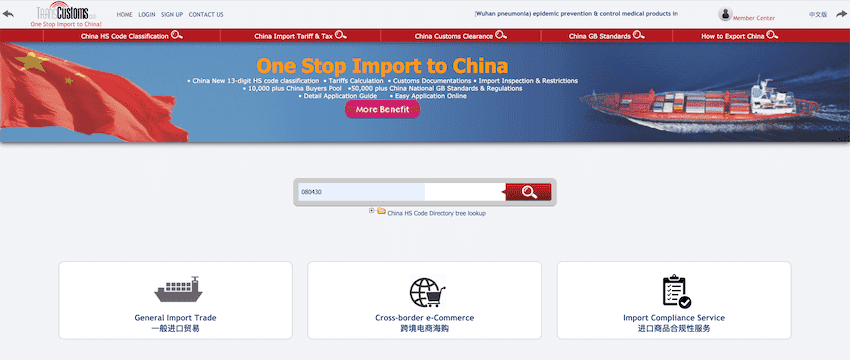
Click Search, and the results will look like this:

3 categories arise import tax and duty, customs declaration, and landed costs.
Let’s take a look at them:
- Import duties and Taxes in China
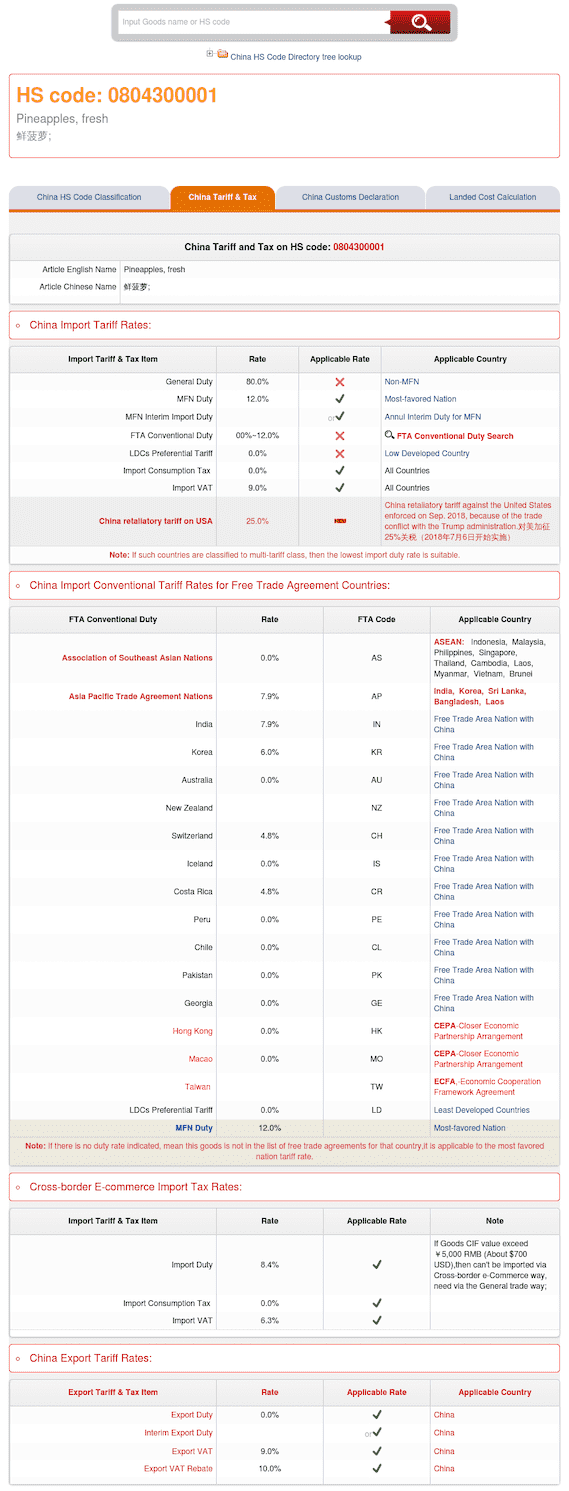
- Cost calculator for cash procurement in China

As we can see, if you import products falling into category 0804 30, you won’t pay customs duties when importing into China.
Does Docshipper charge customs duties?
No, DocShipper does not charge any commission on customs duties. DocShipper only collects customs clearance fees, as our professionals prepare the official documents to be shown to customs.
Customs procedure and contact
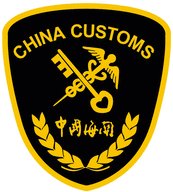
Chinese Customs
Name Official: General Administration of Customs (China)
Website Official: Chinese customs
What import and export licenses are required?
Import license
You don’t need an import license to transfer goods between Hong Kong and China. In fact, all you need is a registered company as the consignee of the shipment, both in China and Hong Kong. It is necessary to comply with local customs formalities; don’t try to shape this detail!
Required documents
Bill of Lading
Here is an example :

Original invoice
The original invoice is required for customs clearance;
Packing list
The packing list provides a summary of your inventory. The packing list indicates which items have been seized, and their declared value. It also specifies the origin and arrival of the merchandise.
Certificate of origin
Certificates of origin must be signed by the supplier and submitted to a government agency in China or Hong Kong, depending on your supplier’s location.
Here’s an example:

Other logistics services
Assessing needs
At DocShipper, we offer comprehensive shipping services that span across the globe. Whether you need air freight.At DocShipper, we offer comprehensive.
Transport insurance
The value of your insurance contract is determined by the value of your possessions. As you can see, the higher the value, the higher the insurance premium. In general, the following calculation is used: (freight value + product value) * 1-3 per cent. Therefore, you can rely on this calculation to make an informed estimate. This rate can be modified according to the nature/category of your goods. Find out more on our dedicated page: Insurance services
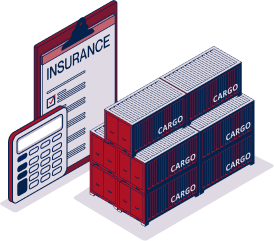
Sourcing services
Are you looking for a verified Chinese supplier? Rely on our sourcing service to find the best supplier for your needs. Our network of over 2,000 verified suppliers and our experience in the field enables us to find you the right supplier quickly. Find out more on our dedicated page: Sourcing services
International moving services
Are you moving to Hong Kong, China, or another country? Whatever your destination, we can take care of your move and guarantee you a perfect international move! Find out more on our dedicated page: Moving services
FAQ | Freight shipping between China and Hong Kong | Rates - Transit Time - Duties and Taxes - Advice
It all depends on your expectations. Air freight will be faster than sea freight, but also more expensive.
Sea freight is recommended for quantities greater than 2 m3.
Yes, we can! Our vehicles collect your products from your manufacturer, and we consolidate them all in our warehouse.
Please note that we are able to provide this type of service in both LCL and FCL, so there are no volume restrictions.
Fill in our online form with the required information: volume, type of goods, departure address, arrival address…
Also, mention the nature of your goods to find out if we have any special documentation and packaging requirements for customs clearance.
The following items are commonly prohibited from import into Hong Kong:
- Controlled substances like narcotics and drugs.
- Firearms and ammunition without proper permits.
- Offensive weapons like flick knives and pepper spray.
- Counterfeit goods, including fake designer items.
- Products made from endangered species.
- Hazardous materials and certain types of batteries.
- Obscene materials, including pornography.
- Copyright infringing goods, such as counterfeit branded products.
- Unlicensed pharmaceutical products.
- Certain food products may have specific regulations.
For the most accurate and up-to-date information, it's recommended to consult the Hong Kong Customs and Excise Department or relevant authorities.
For your business interest, you may like the following useful articles :
We help you with the entire sourcing process so don’t hesitate to contact us if you have any questions!
- Having trouble finding the appropriate product? Enjoy our sourcing services, we directly find the right suppliers for you!
- You don’t trust your supplier? Ask our experts to do quality control to guarantee the condition of your goods!
- Do you need help with the logistics? Our international freight department supports you with door to door services!
- You don’t want to handle distribution? Our 3PL department will handle the storage, order fulfillment, and last-mile delivery!
